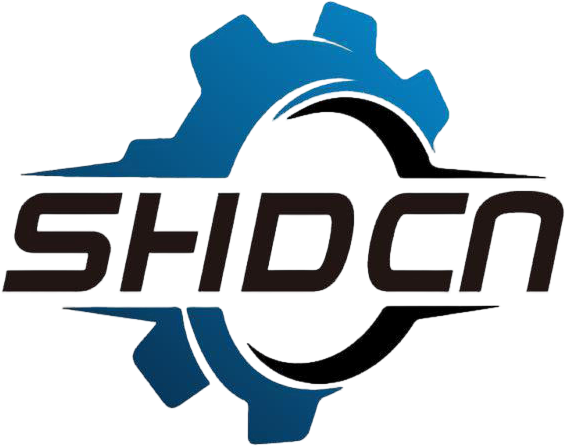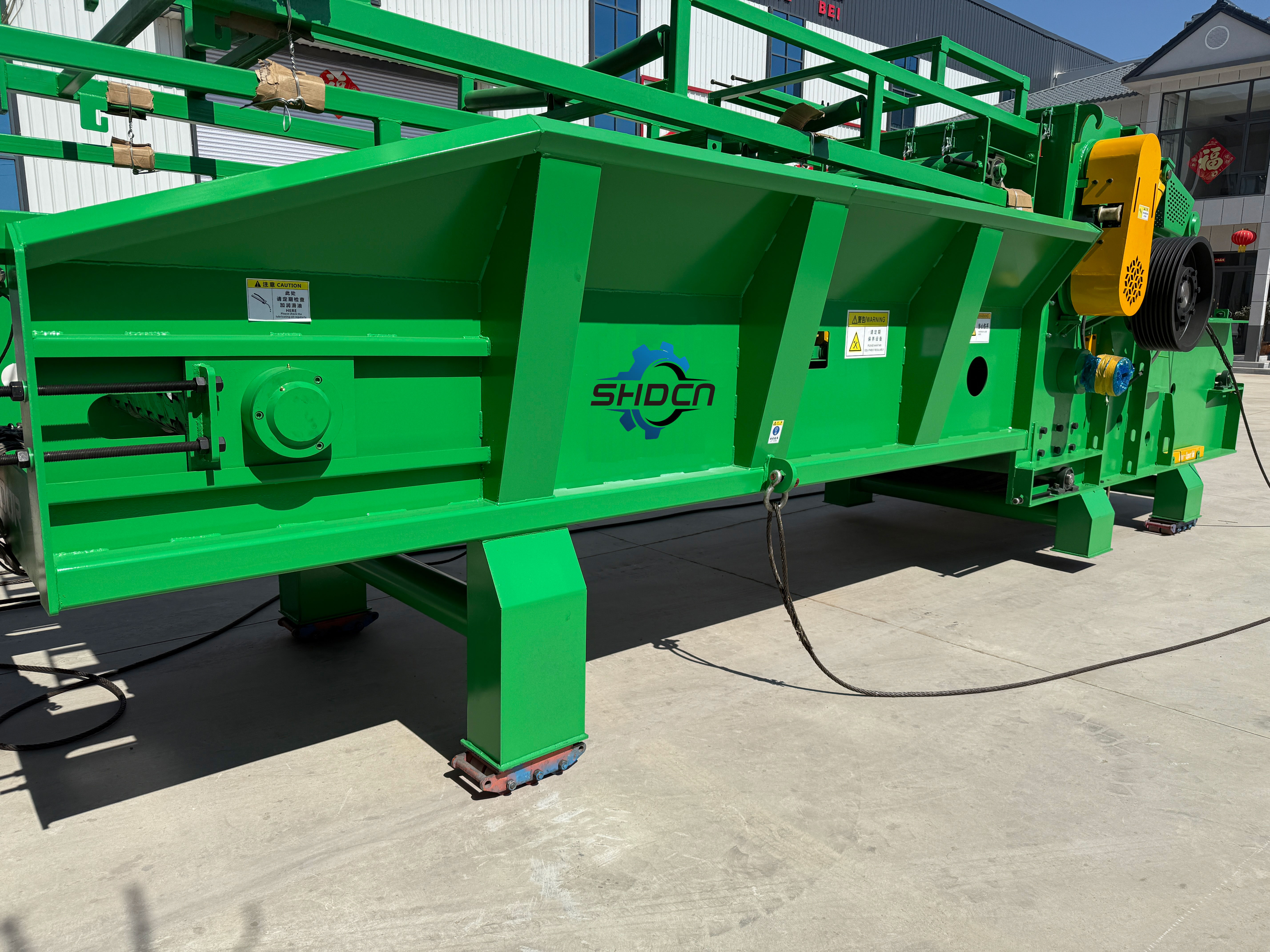Understanding the Role of Wood Crushers in Modern Processing Efficiency
Phenomenon: Rising Demand for Efficient Wood Waste Management
Industrial wood waste generation has surged 23% since 2020 (EPA 2024), driven by stricter landfill regulations and increased biomass utilization. Processing companies now prioritize wood crusher systems that convert debris into uniform chips for mulching, biofuel, or composite materials. This shift reduces disposal fees by $18–$42/ton while creating new revenue streams.
Principle: How Wood Crushers Enhance Throughput and Uniformity
Modern crushers combine impact grinding and screening systems to achieve:
- 300–800 HP rotor configurations for diverse feedstock (logs, pallets, bark)
- ±2mm size consistency via adjustable sieve plates
- 8–25 ton/hour throughput capacities
Precision torque control prevents jams, while dual-flow conveyors maintain continuous material feed—critical for meeting biomass boiler specifications.
Case Study: Increased Output at Pacific Northwest Timber Facility
A 12-month trial showed:
| Metric | Before Crusher Upgrade | After Upgrade |
|---|---|---|
| Monthly chip output | 1,200 tons | 2,150 tons |
| Energy consumption | 48 kWh/ton | 34 kWh/ton |
| Oversized rejects | 9% | 1.7% |
The upgrade significantly boosted production while improving energy efficiency and product consistency.
Trend: Integration of Smart Sensors in Wood Crusher Systems
Leading manufacturers now embed IoT-enabled:
- Vibration sensors predicting bearing failures (85% accuracy)
- Infrared cameras detecting thermal overload risks
- Real-time moisture analyzers adjusting crusher RPM
These systems reduce unplanned downtime by 62% (FandaPelletMill 2023) while optimizing chip quality for downstream processes.
Strategy: Matching Feedstock Type to Crusher Design for Optimal Performance
| Material | Recommended Crusher Type | Screen Size |
|---|---|---|
| Softwood logs | Horizontal shaft grinder | 30–50mm |
| Pallets/nails | Slow-speed shear shredder | 50–75mm |
| Bark/sawdust | Hammer mill | 6–12mm |
Operators using material-specific configurations report 19% higher throughput and 31% longer blade lifespan, emphasizing the importance of proper equipment selection.
Enhancing Operational Efficiency Through Automation and IoT Technology
Impact of Automation on Operational Efficiency in Biomass Comminution
Automation reduces manual interventions in wood crushers by 30–50%, enabling continuous feedstock processing. Advanced systems synchronize feed rates with crusher torque, maintaining optimal motor loads while reducing energy waste. According to 2025 IIoT market projections, industries using automated wood crushers report 22% higher daily throughput compared to manual operations.
IoT-Enabled Monitoring Reduces Downtime in Timber Processing Chippers
Real-time sensor networks detect blade wear and bearing temperatures, triggering maintenance alerts before failures occur. A 2024 case study showed IoT-equipped wood chippers achieved 40% fewer unplanned stoppages by correlating vibration data with cutting efficiency. These systems optimize replacement schedules for wear parts like hammers and screens, extending operational uptime by 17%.
Data-Driven Optimization of Re-Chipping Oversized Wood Chips
Machine learning algorithms analyze chip size distributions, automatically adjusting crusher settings to reduce rework. For mixed hardwood feedstock, predictive models lowered oversized chip rates from 14% to 2% in controlled trials. Operators achieve 12% fuel savings by minimizing reprocessing cycles, demonstrating how data integration transforms wood crushers into precision material reduction tools.
Reducing Energy Consumption and Fuel Costs with On-Site Wood Crushing
Analyzing Energy Consumption in Biomass Comminution Stages
Breaking down biomass usually eats up around 60 to 70 percent of all the energy used in wood processing plants. Research published last year showed something interesting too - when operators shorten the chipper cut length by about 40%, fuel consumption actually goes up by half. This shows just how much difference equipment settings can make to overall efficiency. The newer generation of wood crushers tackle this problem with smart torque control systems that cut down motor strain by roughly 22% when dealing with tougher materials. And there's another trick up their sleeve too. Real time power monitoring helps optimize energy usage by tweaking screen sizes on the fly, keeping production steady without creating unnecessary resistance throughout the process.
Fuel Efficiency Gains from On-Site Waste Processing
When companies put mobile wood crushers to work at actual logging sites, they're saving somewhere around 300 to 400 gallons of diesel every month because they don't have to haul all that debris anywhere else. The whole setup cuts down on how far materials need to travel by roughly 85 percent when compared to traditional central processing plants. Plus, what gets crushed right there on site replaces about half to three quarters of the fossil fuels normally burned in those onsite boilers. Some forward thinking businesses have managed to turn all their wood scraps into usable energy sources now. What used to be just trash sitting around waiting to be hauled away has become something valuable instead. These operations actually save money not only on transportation costs but also when buying fuel, plus they get points for carbon credits too which makes everything balance out nicely in the end.
Economic Benefits of Integrating High-Efficiency Wood Crushers
Reduction of Wood Waste and Disposal Costs Through In-House Crushing
Modern wood crushers reduce waste volumes by 60–80% compared to traditional disposal methods (Biomass Processing Journal 2023), enabling companies to slash landfill fees and transportation costs. A Pacific Northwest lumberyard saved $217,000 annually by replacing off-site waste hauling with in-house processing—funds reinvested into upgrading conveyor systems for 15% faster material handling.
Transformation of Wood Waste into Valuable Products (Mulch, Biomass Fuel)
High-torque crushers convert 92% of feedstock into commercially viable materials according to recent biomass utilization studies. Processed outputs now account for 18% of revenue at progressive sawmills through three channels:
- Biomass fuel (48 MJ/kg energy content) for industrial boilers
- Premium mulch ($28–$35/cubic yard wholesale price)
- Composite materials for construction panels
An Alabama sawmill generated $740k in 2023 by selling chipped hardwood residuals to local bioenergy plants (Ponemon Economic Review).
ROI Analysis of Upgrading to High-Efficiency Wood Crushers
| Cost Factor | Improvement |
|---|---|
| Labor costs | 22% reduction |
| Energy use | 35% reduction |
| Product yield | 41% increase |
Early adopters report 3:1 ROI over 5 years when pairing advanced crushers with IoT-enabled material sorting systems, enabling real-time adjustment of screen sizes and rotor speeds for different wood grades.
Optimizing Output and Feedstock Utilization with Advanced Processing Techniques
Output Optimization in Wood Processing via Precision Screening Systems
Today's wood crushers are getting around 15 to 20 percent better at processing material thanks to smart screening systems that change mesh sizes as they go along, responding to what kind of wood comes in. Research published last year on ScienceDirect showed that facilities equipped with this tech saw their need for second passes drop by about 34% when compared against older machines with static screens. What makes this so valuable is that it keeps all the crushed bits roughly under 50 millimeters in size, which matters a lot for things like making biomass pellets or creating garden mulch where uniformity counts.
Feedstock Type Impact on Processing Efficiency and Final Product Quality
Processing efficiency fluctuates by 18–27% depending on feedstock characteristics. Softwoods like pine require 22% lower crushing force than dense hardwoods, enabling faster throughput but demanding frequent blade adjustments to prevent resin buildup. Moisture content below 15% improves crushing uniformity by 40%, while frozen feedstock (<-5°C) increases energy consumption by 19% in unheated crushers.
Controversy Analysis: Single-Stage vs. Multi-Stage Crushing Efficiency
Multi stage wood crushers do produce about 12 percent finer material which is great for those high end mulch markets. But interestingly enough, around 63 percent of manufacturers have switched to single stage systems lately. These newer models come equipped with adjustable hammer speeds that let them handle all sorts of different materials without much hassle. The technology has improved quite a bit too. Modern single stage machines can actually break down softwood into roughly 90 percent chips smaller than 30 millimeters in just one pass through the machine. That performance matches what older two stage systems used to accomplish, but with about 22 percent less energy consumption according to recent industry reports.
FAQ
What are the benefits of using wood crushers in the processing industry?
Wood crushers enhance efficiency by reducing waste, lowering disposal costs, and creating renewable energy sources. They also improve product consistency while decreasing energy consumption.
How do smart sensors improve the functioning of wood crushers?
Smart sensors in wood crushers predict equipment failures and optimize operations by detecting issues such as bearing failures and thermal overloads, thereby reducing downtime and improving chip quality.
What is the economic impact of integrating high-efficiency wood crushers?
High-efficiency wood crushers reduce labor and energy costs while increasing product yield. Companies usually see a significant return on investment over time by improving waste management and converting waste into profitable products.
How does feedstock type influence wood crusher efficiency?
Feedstock type affects efficiency and energy consumption. For example, softwoods require less crushing force than hardwoods and are processed faster, while moisture content and temperature can influence both the uniformity and energy usage of crushing processes.
Table of Contents
-
Understanding the Role of Wood Crushers in Modern Processing Efficiency
- Phenomenon: Rising Demand for Efficient Wood Waste Management
- Principle: How Wood Crushers Enhance Throughput and Uniformity
- Case Study: Increased Output at Pacific Northwest Timber Facility
- Trend: Integration of Smart Sensors in Wood Crusher Systems
- Strategy: Matching Feedstock Type to Crusher Design for Optimal Performance
- Enhancing Operational Efficiency Through Automation and IoT Technology
- Reducing Energy Consumption and Fuel Costs with On-Site Wood Crushing
- Economic Benefits of Integrating High-Efficiency Wood Crushers
- Optimizing Output and Feedstock Utilization with Advanced Processing Techniques
- FAQ

